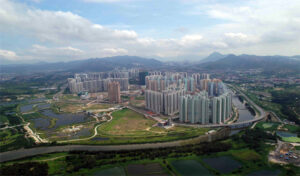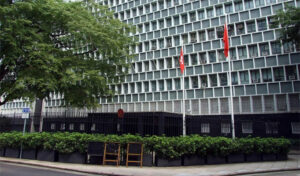Once the metros have been tapped, the question that often troubles a retailer is – where to be next? Several retailers in the country eventually reach a stage where it becomes imperative to answer the question – to be or not to be in Tier II and III cities!
Once this question is answered in the affirmative, the task at hand is to lay-out a coherent strategy that would determine which cities to expand into, over what timelines, with what kind of store size and with what format tweaks, if any.
Listed below are five factors a retailer should keep in mind when planning expansion in Tier II and III cities.
1Satellite Towns & Extended Metro City Suburbs
Lack of affordability in the core city, enhanced connectivity with outlying suburbs, and acceptance of greater commute time has eventually led to rapid development of extended suburbs and satellite towns, populated to a significant extent by the next generation of people residing in the core city.
- Better market and customer understanding: Retailers may find themselves familiar with the markets in satellite towns due to preexisting knowledge of shopper profile, competition, regulations, and suppliers. They may find that many residents of satellite towns are already exposed to their brands and frequently shop in their core city stores. They can tap into their loyalty programs to accurately size-up the market potential at satellite towns to determine if the opportunity merits opening a separate store.
- Extension of existing supply chain: Retailers may find it easier to roll-out their supply chains to satellite towns in contrast to distant towns that may require setting-up new supply lines.
- Better visibility of long term sales growth: Satellite towns and extended suburbs usually have greater visibility of long term sales growth due to the growth in market size from the steady influx of population from down-town. This is in contrast to completely disconnected distant towns which may need distinct drivers of economic growth to fuel sales growth beyond the initial 2-3 years.
- Exposure to parent city lifestyle: In most cases, potential shoppers are significantly exposed to the lifestyle trends prevalent in the core city
2Ease of Supply Chain Management
Cost efficient supply chain management is amongst the most important considerations guiding retailers’ expansion plans. Supply chain synergies played a big part in guiding the expansion of Walmart, which expanded rapidly from 1970 using a cluster approach to opening stores to fully exhaust the potential of a particular market while maximizing supply chain synergies.
- Makes expansion more feasible: Clusters of closely located big cities off er logistical benefits that make expansion more feasible since the cost of setting up a new distribution centre is loaded onto multiple stores rather than a single store.
- Economies of scale: For a small incremental cost the retailer can access collectively much bigger market enjoying economies of scale.
3State Capitals
State capital cities house the offices of state government departments which employ a large section of the local populace. The government machinery provides significant economic impetus to these cities which also tend to be the largest economic centers in these states.
- Large employee base: Large clusters of state government employees which serve as a ready market for the brand.
- Regional centres: Many state capitals tend to serve as regional economic centres with substantially large volumes of trade and economic activity.
- Trend-setters: State capitals often tend to be trend-setters for other smaller towns in the state or region.
4Tourist Towns
Tourist towns are characterized by a large floating population with an increased propensity to spend. Several studies have pointed out how shoppers tend to make bigger discretionary purchases thereby providing an attractive market for relevant retailers. A recent report by JLL titled ‘Destination Retail 2016’ ranks 140 global cities based on the presence of 240 global retail brands in those cities.
A common theme across the cities ranking high on the JLL Global Cross Border Retailer Attractiveness Index is the highly developed tourism sector of those cities (London is at the top spot followed by Hong Kong, Paris, etc.,).
- Floating population: Large floating population of tourists Infrastructure: Presence of support infrastructure conducive to retail.
- Shopping driven tourism: Shopping is oft en intrinsic to the travel objective.
- Propensity to spend: Greater propensity of tourists to spend – higher conversion and transaction size.
5Educational/Industry hubs
Some cities often may not pass a strict screening criteria based on minimum population, population density, or other demographic variables. However, such cities may possess the critical mass of target audience that could make opening a store viable due to the presence of a strong economic driver.
- Under-served markets: Tap into dense pockets of under-served target audience
- High density of target audience: Educational hubs have younger target audience more open to experimental shopping
- Enough critical mass: Have enough critical mass to sustain a store
- Pockets of affluence: Usually affluent shoppers with little choice locally Once the retailer decides to keep these key factors in mind, the decision of where to expand becomes so much easier.
(Text Sourced From Malls of India 7th Edition 2017-20. Click HERE to buy a copy)












